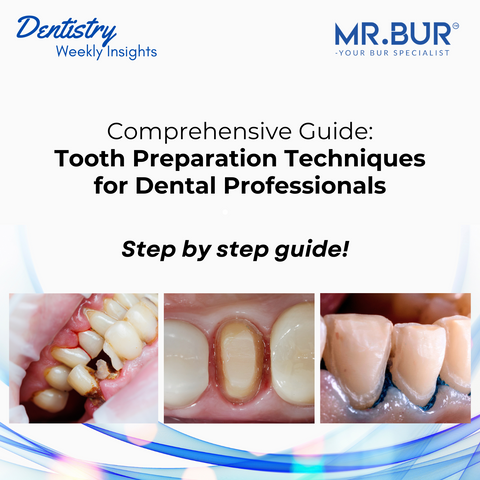A Brief Introduction to G.V. Black
Dr. Greene Vardiman Black, commonly referred to as G.V. Black, is often hailed as one of the founders of modern dentistry. His contributions, particularly in the field of dental caries classification, have profoundly impacted how dentists diagnose and treat caries. Black's classification system, developed in the late 19th century, remains a cornerstone in dental education and practice. Understanding his classification is not just about honoring a pioneer; it’s about leveraging a tried-and-true method that enhances clinical accuracy and patient care.
The Importance of Caries Classification in Modern Dentistry
Caries classification is fundamental to the practice of dentistry. Accurate classification allows for precise diagnosis, effective treatment planning, and consistent communication among dental professionals. This article aims to delve into the significance of G.V. Black’s caries classification system and its continued relevance in contemporary dental practice.
Overview of G.V. Black’s Caries Classification
Historical Context
G.V. Black’s classification system was developed at a time when dental caries were poorly understood, and treatments were inconsistent. Black’s systematic approach provided a standardized method for diagnosing and treating caries, transforming dental practice. His classification, first published in 1896, categorized caries based on their location and extent, providing a clear framework that has stood the test of time.
The Six Classes of Caries
Black's classification system divides caries into five distinct classes:
- Class I: Pits and fissures on occlusal surfaces of molars and premolars, buccal or lingual pits of molars, and lingual pits of maxillary incisors.
- Class II: Proximal surfaces of posterior teeth (molars and premolars) involving two or more surfaces.
- Class III: Proximal surfaces of anterior teeth that do not involve the incisal angle.
- Class IV: Proximal surfaces of anterior teeth that involve the incisal angle.
- Class V: Cervical third of the facial or lingual surfaces of all teeth.
- Class VI: Never described by Black, later added by W.J. Simon in 1956: caries affecting the cusp tips of molars, premolars, and cuspids.
Each class addresses a specific type of carious lesion, providing a structured approach to diagnosis and treatment.
Advantages of Understanding G.V. Black’s Classification
Enhanced Clinical Skills
Mastering Black’s classification system can significantly enhance a dentist’s clinical skills. Understanding the nuances of each class allows for more precise diagnosis and treatment.
Improved Patient Outcomes
Using Black’s classification leads to improved patient outcomes. Accurate diagnosis and tailored treatment plans result in better management of carious lesions, preventing progression and reducing the need for more invasive procedures.
Streamlined Documentation and Communication
Black’s classification facilitates clearer documentation and communication. Accurate record-keeping is essential for tracking a patient’s dental health over time. Moreover, using a standardized classification system ensures that all dental professionals involved in a patient’s care have a clear and consistent understanding of their condition, leading to better-coordinated treatment.
Dental Bur Specification for Each Class

Class I: Mr. Bur Round carbide bur and pear shaped carbide bur are designed to remove caries in the pits and fissures on the occlusal surfaces of molars and premolars, buccal or lingual pits of molars, and lingual pits of maxillary incisors.


Class II: Mr. Bur straight fissure cross cut burs and round carbide bur are designed for removing caries on the proximal surfaces of premolars and molars.


Class III: Mr. Bur straight fissure cross cut burs are designed for removing caries on the proximal surfaces of incisors and canines that do not involve the incisal angle.


Class IV: Mr. Bur round carbide bur, flame diamond bur, round collar carbide bur are designed for removing caries on the proximal surfaces of incisors and canines that involve the incisal angle. The round collar bur is use to create a gingival retention groove.


Class V: Mr. Bur taper flat end carbide bur and straight fissure cross cut burs are designed for removing caries on the gingival third of the facial or lingual surfaces of all teeth.


Class VI: Mr. Bur tapered fissure cross cut burs are designed for removing caries on the incisal edges of anterior teeth and the cusp tips of posterior teeth.
Integration with Modern Dental Technologies
Digital Dentistry
G.V. Black’s classification integrates seamlessly with digital diagnostic tools, enhancing its applicability in modern practice. Digital radiographs and intraoral scanners provide high-resolution images that help in accurately identifying and classifying carious lesions. These technologies complement Black’s system, making the diagnosis process more efficient and precise.
Advances in Caries Detection
Modern advancements, such as laser fluorescence and quantitative light-induced fluorescence (QLF), offer enhanced detection capabilities. These technologies can detect early carious lesions that might not be visible to the naked eye. Integrating these advancements with Black’s classification allows for earlier intervention and better preventive care.
Continuing Education and Professional Development
Ongoing education is crucial for staying updated with the latest advancements in caries detection and treatment. Many dental organizations offer continuing education courses that cover both G.V. Black’s classification and modern diagnostic techniques. Engaging in these educational opportunities helps dental professionals maintain their skills and stay current with emerging trends.
Challenges and Criticisms
Limitations of G.V. Black’s Classification
While G.V. Black’s classification has numerous advantages, it is not without limitations. Some critics argue that it does not account for the complexity of caries progression and the role of biofilm in caries development. Additionally, it may not fully address the needs of modern, minimally invasive dentistry. Dentists should be aware of these limitations and use complementary diagnostic tools and approaches when necessary.
Evolution and Alternatives
Several alternative classification systems have been developed since Black’s time, such as the International Caries Detection and Assessment System (ICDAS). These systems offer more detailed assessments of carious lesions and take into account the lesion’s activity and extent. Comparing and contrasting these systems with Black’s classification can provide a more comprehensive approach to caries management. Subscribe to our newsletter for more info.
References
- Black, G. V. (1908). Operative Dentistry, Vol. 1: Pathology of the Hard Tissues of the Teeth. Chicago: Medico-Dental Publishing Company.
- Young, D. A., Nový, B. B., Zeller, G. G., Hale, R., Hart, T. C., Truelove, E. L., ... & Featherstone, J. D. B. (2015). The American Dental Association Caries Classification System for Clinical Practice. JADA, 146(2), 79-86.
- Pitts, N. B., Ekstrand, K. R. (2013). International Caries Detection and Assessment System (ICDAS) and its International Caries Classification and Management System (ICCMS) - methods for staging of the caries process and enabling dentists to manage caries. Community Dentistry and Oral Epidemiology, 41(1), e41-e52.
At MR. BUR United Kingdom, we ensure unwavering quality and safety through strict compliance with all relevant regulations.
Diamond Burs, Carbide Burs, Surgical & Lab Use Burs, Endodontic burs, IPR Kit, Crown Cutting Kit, Gingivectomy Kit, Root Planning Kit, Composite Polishers, High Speed Burs, Low Speed Burs
Subscribe our newsletter now!




